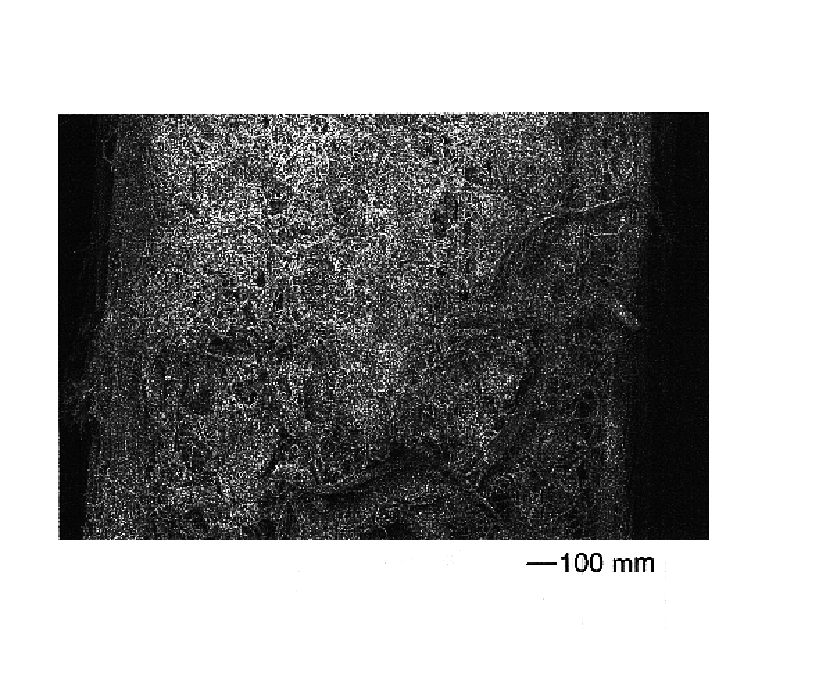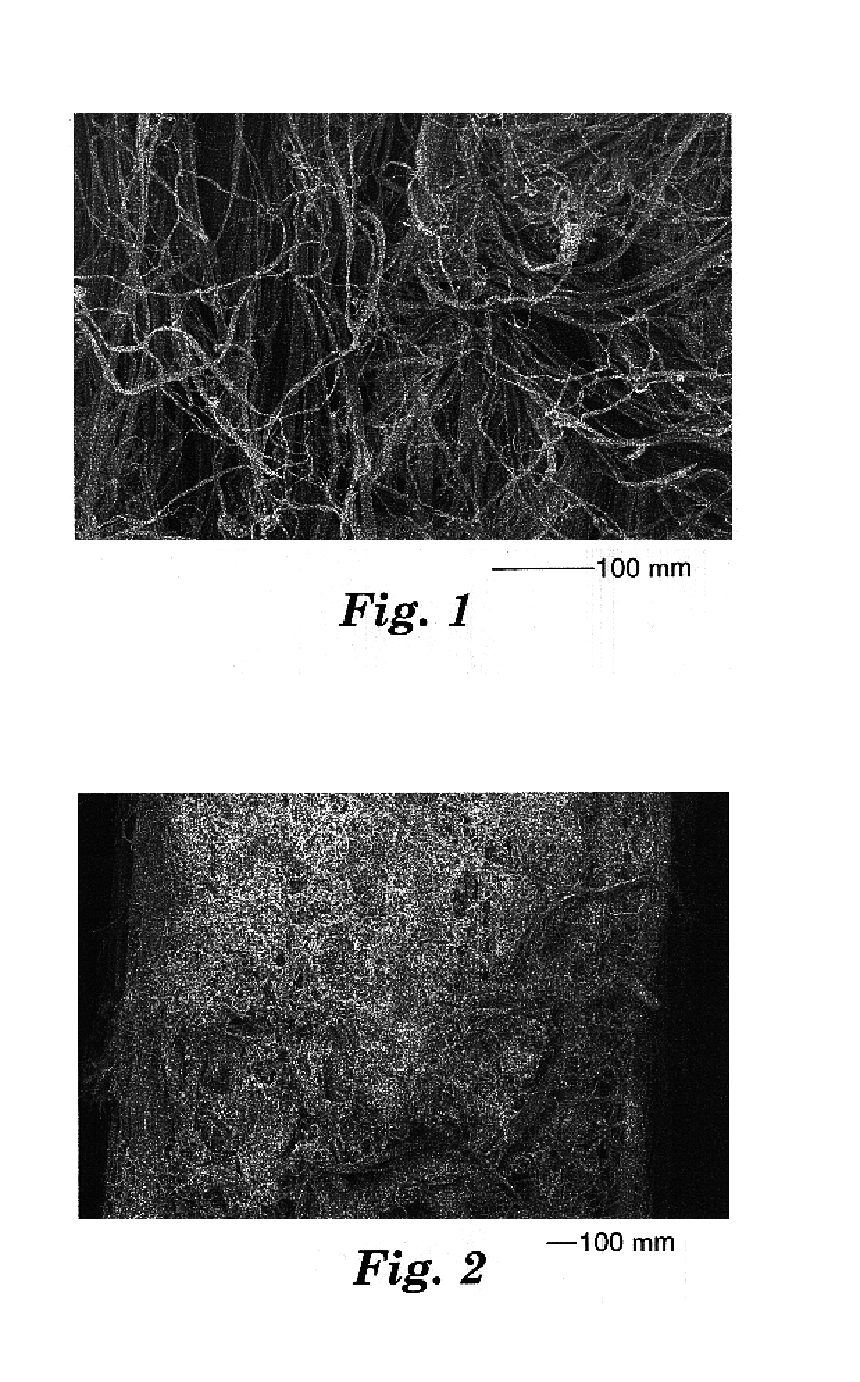Toughened cementitious composites
a composite material and cementitious technology, applied in the field of toughening and reinforcing brittle matrix materials, can solve the problems of reducing the diameter of the fiber as the fibers are highly drawn, requiring a prohibitively large fiber die, and debonding between the fibers and the matrix, so as to reduce the propagation of cracks, increase the toughness of fractures, and reduce brittleness
- Summary
- Abstract
- Description
- Claims
- Application Information
AI Technical Summary
Benefits of technology
Problems solved by technology
Method used
Image
Examples
example 1
[0092]Polypropylene film was prepared by extruding polypropylene homopolymer (Fina 3374X, available from Fina Inc., Dallas, Tex.) in a single screw extruder with an extruder temperature profile of 190° C., 210° C., 220° C., 230° C. from the feed throat to the end of the extruder. The neck tube and die were maintained at 230° C. The extruder was equipped with a barrier screw having a Maddoch mixing tip and with a 12.7 cm wide, single layer Cloeren die having an orifice gapped to a nominal 0.245 cm. A film having a thickness of 1.9 mm and a width of 127 mm was prepared using a three-roll stack casting station. In the three-roll stack, the bottom chrome-coated stainless steel roll was set to 71° C., the middle chrome-coated stainless steel roll was set to 80° C., and the top silicon rubber roll was cooled with 45° C. water. The polymer melt exiting the extruder die entered the three-roll stack between the bottom and middle rolls, and after passing between the bottom and middle rolls, t...
example 2
[0095]Polypropylene film was prepared by extruding polypropylene homopolymer (Fina 3374X, available from Fina Inc., Dallas, Tex.) with 0.01% of a gamma-quinacridone (Hostaperm Red E3B pigment, available from Clariant GmbH, Frankfurt, Germany) beta-nucleating agent in a single screw extruder with an extruder temperature profile of 190° C., 210° C., 220° C., 230° C. from the feed throat to end of the extruder. The neck tube and die were maintained at 230° C. A film having a thickness of 2.3 mm and a width of 114 mm was prepared using a three-roll stack casting station as in Example 1, except that the silicone rubber roll was cooled with 35° C. water.
[0096]The resulting cast film was oriented as in Example 1. The resulting oriented film had a draw ratio of 13:1 as determined by Test Procedure III, had a thickness of 211 micrometers, and contained no voids as determined by Test Procedure II. The tensile strength and modulus of the film were measured according to Test Procedure I and fou...
example 3
[0098]Calendered / length oriented film prepared as in Example 1 was cold embossed between two textured rolls that were maintained at room temperature.
[0099]The resulting embossed films were slit into fibers using a shear slitter, such that the resulting individual fibers were 1.59 mm wide. The fibers were then cut to 51 mm lengths as previously described. The resulting fibers had a wavy or crimped structure.
PUM
| Property | Measurement | Unit |
|---|---|---|
| thickness | aaaaa | aaaaa |
| thickness | aaaaa | aaaaa |
| thickness | aaaaa | aaaaa |
Abstract
Description
Claims
Application Information
 Login to View More
Login to View More - R&D
- Intellectual Property
- Life Sciences
- Materials
- Tech Scout
- Unparalleled Data Quality
- Higher Quality Content
- 60% Fewer Hallucinations
Browse by: Latest US Patents, China's latest patents, Technical Efficacy Thesaurus, Application Domain, Technology Topic, Popular Technical Reports.
© 2025 PatSnap. All rights reserved.Legal|Privacy policy|Modern Slavery Act Transparency Statement|Sitemap|About US| Contact US: help@patsnap.com


